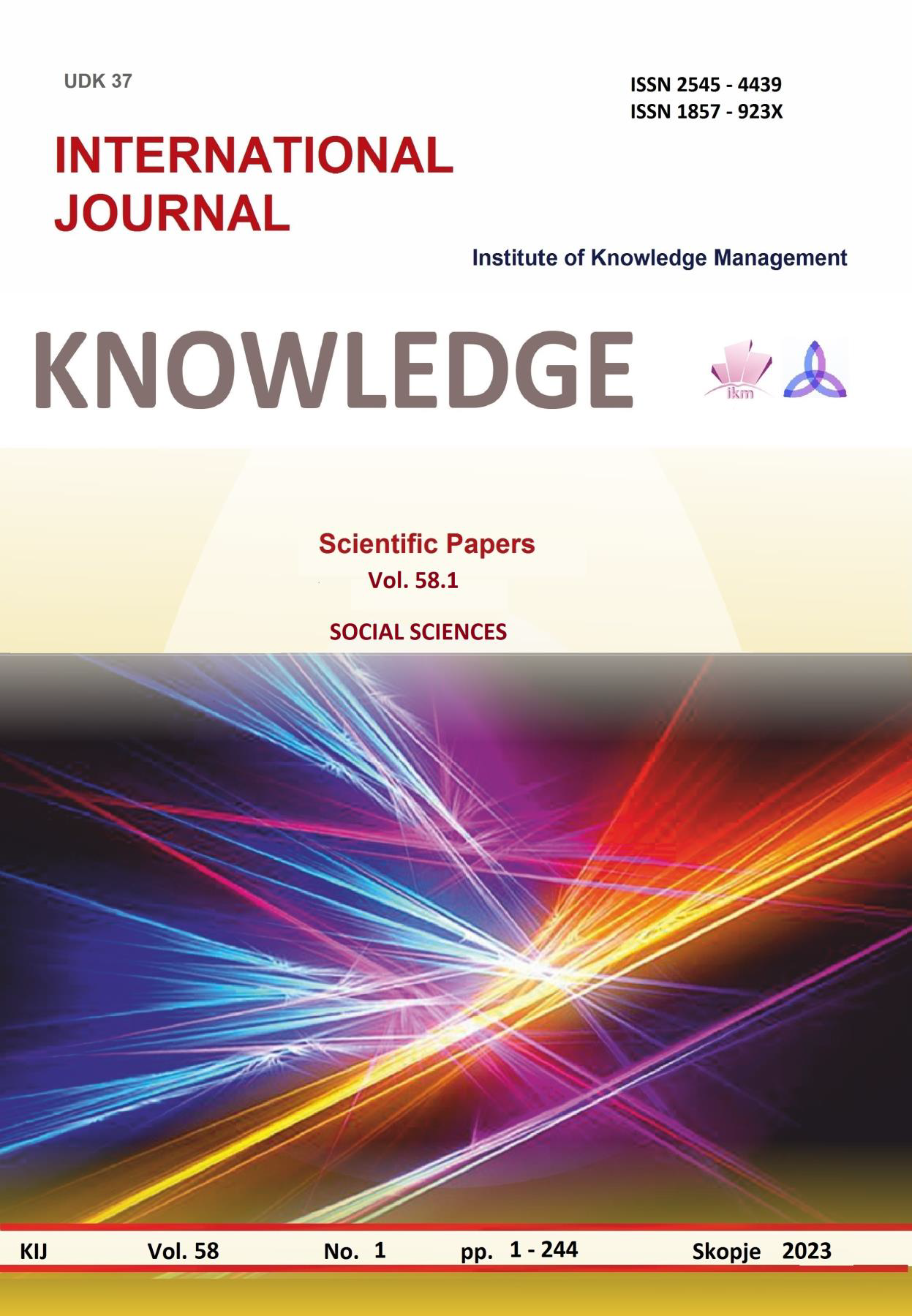THE IMPACT OF INTELLECTUAL PROPERTY RIGHTS ON THE ECONOMIC GROWTH OF THE REPUBLIC OF NORTH MACEDONIA
DOI:
https://doi.org/10.35120/kij5801029aKeywords:
Intellectual property rights, economic growth, development, OLSAbstract
For a long time, scholars and governments had been dealing with the question of whether there is a nexus between intellectual property rights (IPRs) and economic development, and if so, how strong is the link. From the studies done until now, we have clearly indicated that the impact of IPRs is a complex issue and significantly varies across industries and across development stages. The conclusions of the economic literature are ambiguous: some studies conclude that this connection is apparently strong, while others conclude the connection of IPRs and economic development to be fairly weak. Nevertheless, the income of the country is an important determinant while analyzing the impact of IPRs on economic growth of a country. The effect of IPRs protection on growth depends upon the level of development. It is positively and significantly related to growth for low-and high-income countries, but not for middle-income countries. This suggests that, although IPRs connection is quite significant for high-income and low-income countries, middle-income countries are not a typical case of it.
The study looks at the impact of intellectual property rights on the economic growth for the case of the Republic of North Macedonia. To address some of the issues concerning IPRs, this study defines what Intellectual Property Rights are, their definition, history, protection, regime, their instruments, international and national laws etc. It also attempts to evaluate the relationship between the protection of intellectual property and economic activity in the Republic of North Macedonia.
Despite many inquiries into this particular field, it is important to accentuate that there is less research made on intellectual property rights and economic growth that is focused on data in a transitional context. Therefore, there is a significant gap in this area, which is evident from the dispersed regulation of the intellectual property rights in the Republic of North Macedonia. Put differently, there is no State Office for Intellectual Property, but State Office for Industrial Property. This makes research in this field even more complicated.
In the case of the Republic of North Macedonia this is a highly new prosperous field where less research is done. Therefore, the research results will highly contribute regarding this field to the country and its government regarding the economic development of the country as well as the establishment of the new sphere such as intellectual property.
Results of econometric modeling and the analysis of gathered data will provide the empirical evidence for the nexus between intellectual property rights and economic growth of the Republic of North Macedonia. Moreover, the research will discuss the reform of IPR’s regime and will offer recommendations for their enforcement and administration.
References
Akimovska, P. M., Anastasovska D. J., Buckovski, V., & Pepeljugovski, V. (2004). Intellectual property I, Industrial property, Skopje.
Anup, C., & Caenegem, W. (2009). Intellectual Property Policy Reform: Fostering Innovation and Development, Cheltenham.
Arnesen, S., Broberg, M., Hansen, N., Nordström, D., Odbratt, M., & Tu, V. (2021). Strategies for Intellectual Property in Transformative Industries.
Borovitsky, D. (2020). Intellectual Property Rights and Foreign Direct Investment in Low Income Countries.
Correa, C. M. (2020). “Literature Review Article: Intellectual Property and Economic Development,” Intellectual Property and Economic Development, vol. 23.
Dai, J. (2020). Intellectual property rights protection, foreign technology introduction and FDI-based on the provincial-level panel data of China. Journal of Accounting, Busi ness and Finance Research, 8(1), 30-38.
Drahos, P. (1996). A philosophy of Intellectual Property, Dortmouth Publishing Company, 1996.
Falvey, R., Foster, N., & Greenaway, D. (2006). “Intellectual Property Rights and Economic Growth,” Review of Development Economics, Vol. 10, pp. 700 – 719.
Frank, S.J. (2006).Intellectual Property for Technology Managers and Investors, Cambridge University Press, UK.
Ginarte, J., & Park, W. (1997). “Determinants of patent rights: a cross-national study,” Research Policy, Vol. 26, pp. 283-301.
Grossman, G., & Lai, E. (2004). “International Protection of Intellectual Property”, American Economic Review, Vol. 95, pp. 1635-1653.
Kumar, J. (2002). “Intellectual Property Rights, Technology, and Economic Development: Experiences of Asian Countries,” Research and Information System for the Non-Aligned and Other Developing Countries, Discussion Paper No. 25.
Landes, W., & Posner, R. (2003). The Economic Structure of Intellectual Property Law, Hardvard University Press.
Lee, M., Alba, J. D., & Park, D. (2018). Intellectual property rights, informal economy, and FDI into developing countries. Journal of Policy Modeling, 40(5), 1067-1081.
Lemley, A. M. (2005). Property, Intellectual Property, and Free Riding, Texas Law Review, Vol. 83, pp. 1031-1033.
Menell, S. P. (1999). Intellectual Property: General Theories, Berkeley, 1999.
Neves, P. C., Afonso, O., Silva, D., & Sochirca, E. (2021). The link between intellectual property rights, innovation, and growth: A meta-analysis, Economic Modelling, Volume 97, 2021, Pg. 196-209, ISSN 0264-9993, https://doi.org/10.1016/j.econmod.2021.01.019.
Park, W., & Ginarte, J. (1997). “Intellectual Property Rights and Economic Growth,” Contemporary Economic Policy, Vol. 15, pp. 51 - 61.
Poltorak, I. Alexander, L., & Paul J. (2004). Essentials of Licensing Intellectual Property, John & Sons, Inc, New Jersey.
Reboul, Y., Akimovska, P. M., & Naumovski, G. (2010). Introduction to Trademarks and Geographical Indications, Iustinianus Primus Faculty of Law, Skopje.
Shao, S. J. (2019). “A brief analysis of the relationship between intellectual property protection and digital economy development,” People’s Forum, no. 24, pp. 46-47.
Schneider, P. (2005). “International Trade, Economic Growth, and Intellectual Property Rights: A Panel Data Study of Developed and Developing Countries,” Journal of Development Economics, Vol. 78, pp. 529 – 547.
WIPO (1988), Intellectual Property Handbook: Policy, Law and Use, Geneva 1988.
WIPO (2010), World Intellectual Property Indicators, Geneva, 2010, pp. 97.
WIPO (2020), World Intellectual Property Report, 2020.
WIPO (2022), World Intellectual Property Report, 2022.





